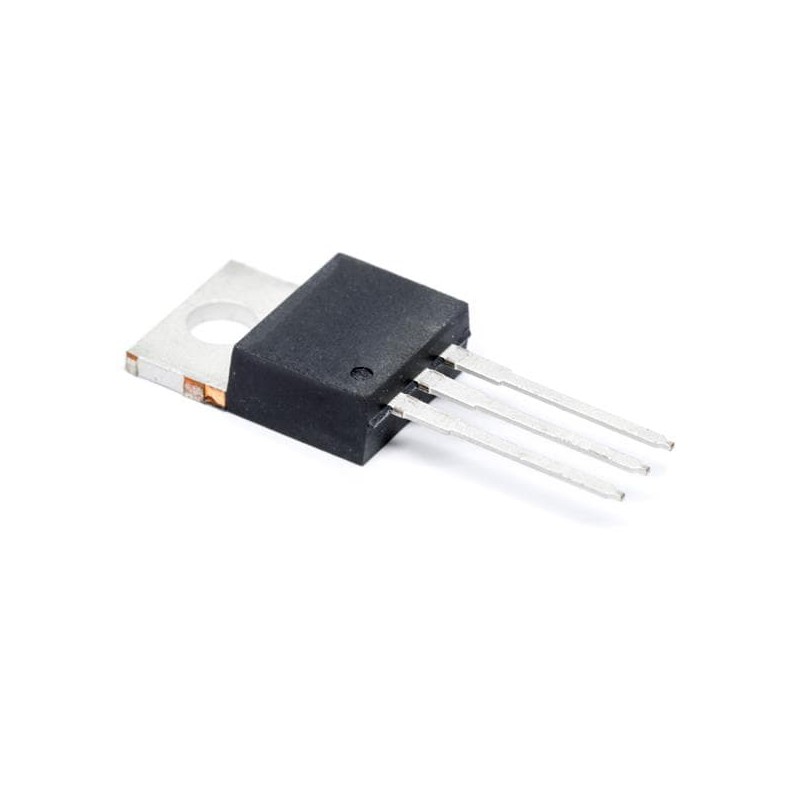Rf Mosfet
HEXFET vs MOSFET | difference between HEXFET and MOSFET
This page compares HEXFET vs MOSFET and mentions difference between HEXFET and MOSFET.

MOSFET
- The VRF family of RF MOSFETs includes improved replacements for industry-standard RF transistors. They provide improved ruggedness by increasing the Bvdss over 30 percent from the industry-standard 125V to 170V minimum.
- RF small-signal FETs. We offer a wide range of proven RF small-signal field-effect transistors (FETs)—from N-channel dual-gate MOSFETs to dedicated P.
The full form of MOSFET is Metal Oxide Semiconductor Field Effect Transistor.Figure-1 depicts 600 Volt SJ-MOSFET structure and circuit symbol.
Refer Depletion MOSFET vs Enhancement MOSFET➤ and MOSFET Fabrication Technology➤.
Part Name Description; F1007/PF: 4A, 70V, RF N-Channel MOSFET. F1008/PF: 8A, 70V, N-Channel RF Power MOSFET. 10 W RF MOSFET Transistors are available at Mouser Electronics. Mouser offers inventory, pricing, & datasheets for 10 W RF MOSFET Transistors.
Rf Mosfet Circuit
HEXFET
HEXFET is trademark of power MOSFET developed by International Rectifier.The HEXFET structure is shown in the figure-2. As shown silicon oxide layer between gate and source regionscan be punctured by exceeding its dielectric strength. The symbol is same as power MOSFET as shownin the figure-1. It is a voltage controlled power MOSFET device.
When voltage is being applied between Gate and Source terminals, E-field is setupwithin HEXFET device. This electric field inverts the channel from P to N such thatcurrent can flow from Drain to Source in un-interrupted sequence of N-type silicon.
FETs can be of two types viz. enhancement mode and depletion mode.Enhancement mode devices require gate voltage of same sign as drain voltage in order topass the current.Depletion mode devices are usually ON and are turned OFF by Gate voltage of samepolarity as drain voltage.
Following points differentiate HEXFET from MOSFET devices.
➨All HEXFET® devices are enhancement mode devices.
➨As mentioned HEXFET® is trademark of International Rectifier.
➨Gate to source voltage of most of the HEXFET devices arebetween 10 and 30 V.
➨Example: IRF540 is HEXFET device and IRL540 is MOSFET device.
MOSFET and BJT related links
MOSFET vs IGBT➤
PNP Transistor Vs NPN Transistor➤
BJT vs FET➤
JUGFET vs MOSFET➤
Depletion MOSFET vs Enhancement MOSFET➤
MOSFET Fabrication Technology➤
MOSFET vs BJT-Difference between MOSFET and BJT➤
Application Note-MOSFET as switch and amplifier➤
Difference between NMOS vs PMOS➤
What is Difference between
difference between FDM and OFDM
Difference between SC-FDMA and OFDM
Difference between SISO and MIMO
Difference between TDD and FDD
Difference between 802.11 standards viz.11-a,11-b,11-g and 11-n
OFDM vs OFDMA
CDMA vs GSM
RF and Wireless Terminologies
Share this page
Translate this page
by Majeed Ahmad
High temperatures and operating conditions outside the safe operating area can sabotage MOSFETs used in switching circuits.
The MOSFET (metal-oxide-semiconductor field-effect transistor) is a primary component in power conversion and switching circuits for such applications as motor drives and switch-mode power supplies (SMPSs). MOSFETs boast a high input gate resistance while the current flowing through the channel between the source and drain is controlled by the gate voltage. However, if not appropriately handled and protected, the high input impedance and gain can also lead to MOSFET damage caused by over voltage or too-high current.
First a few basics about avoiding MOSFET damage. Obviously, Vgs and Vds must both be within limits. The same for current, Id. There is also a power limit given by the maximum junction temperature. Basic values for the upper maximum on these parameters are given in the safe operating area (SOA) graph in the MOSFET datasheet. But it turns out, other thermal limits can apply. The SOA graph, for example, generally assumes an ambient temperature of 25° C with a specific junction temperature, usually below 150° C. But there are a variety of conditions that may cause high thermal gradients that may lead to expansion and cracking of the MOSFET die.
One factor to consider in this regard is that MOSFET thermal resistance is an average; it applies if the whole die is at a similar temperature. But MOSFETs designed for switch-mode power supplies can experience a wide temperature variation over different areas of their die. Optimized for on/off switching, they typically don’t work well in their linear region.
A typical failure mode for a MOSFET is a short between source and drain. In this case, only the source impedance of the power source limits the peak current. A common outcome of a direct short is a melting of the die and metal, eventually opening the circuit. For example, a suitably high voltage applied between the gate and source (VGS) will break down the MOSFET gate oxide. Gates rated at 12 V will likely succumb at about 15 V or so; gates having a 20-V rating typically fail at around 25 V.
All in all, exceeding the MOSFET voltage rating for just a few nanoseconds can destroy it. Device manufacturers recommend selecting MOSFET devices conservatively for expected voltage levels and further suggest suppressing any voltage spikes or ringing.
Too little gate drive
MOSFET devices are designed to dissipate minimal power when turned on. And the MOSFET must be turned on hard to minimize dissipation during conduction, otherwise it will have a high resistance during conduction and will dissipate considerable power as heat.
Generally speaking, a MOSFET passing high current will heat up. Poor heat sinking can destroy the MOSFET from excessive temperature. One way of avoiding too-high current is to parallel multiple MOSFETs so they share load current.
Rf Mosfet Amplifier Design
Many P- and N-channel MOSFETs are used in topologies involving an H- or L-bridge configuration between voltage rails. Here, if the control signals to the MOSFETs overlap, the transistors will effectively short-circuit the supply. This is known as a shoot-through condition. When it arises, any supply decoupling capacitors discharge rapidly through both MOSFETs during every switching transition, causing short but large current pulses.


The way to avoid this condition is to provide a dead time between switching transitions, during which neither MOSFET is on.
Over-currents even for a short duration can cause progressive damage to a MOSFET, often with little noticeable temperature rise before failure. MOSFETs often carry a high peak-current rating, but these typically assume peak currents only lasting 300 µsec or so. It is particularly important to over-rate MOSFETs for peak current when they switch inductive loads.
When switching inductive loads there must be a path for back EMF to freewheel when the MOSFET switches off. Freewheeling is the sudden voltage spike seen across an inductive load when its supply voltage is suddenly interrupted. Enhancement mode MOSFETs incorporate a diode that provides this protection.
Rf Mosfet Switch
High-Q resonant circuits can store considerable energy in their inductance and capacitance. Under certain conditions, this high energy causes the current to freewheel through the internal body diodes of the MOSFETs as one MOSFET turns off and the other turns on. (An intrinsic body diode is formed in the body-drain p-n junction connected between the drain and source. In N-channel devices, the body diode anode connects to the drain. The polarity is reversed in P-channel MOSFETs.) A problem can arise because of the slow turn-off (or reverse recovery) of the internal body diode when the opposing MOSFET tries to turn on.
MOSFET body diodes generally have a long reverse recovery time compared to the performance of the MOSFETs themselves. If the body diode of one MOSFET conducts when the opposing device is on, a short circuit arises resembling the shoot-through condition. The solution to this problem involves a Schottky diode and a fast-recovery diode. The Schottky diode connects in series with the MOSFET source and prevents the MOSFET body diode from ever being forward biased by the freewheeling current. The high-speed (fast recovery) diode connects in parallel with the MOSFET/Schottky pair. It lets the freewheeling current bypass the MOSFET and Schottky completely. This ensures the MOSFET body diode is never driven into conduction.
Transitions
A MOSFET dissipates little energy during its steady on and off states, but it dissipates considerable energy during times of a transition. Thus, it is desirable to switch as quickly as possible to minimize power dissipated. Because the MOSFET gate is basically capacitive, it requires appreciable current pulses to charge and discharge the gate in a few tens of nanoseconds. Peak gate currents can be as high as an ampere.
Mosfet With Esd Protection
The high impedance of MOSFET inputs can lead to stability problems. Under certain conditions, high-voltage MOSFETs can oscillate at high frequencies because of stray inductance and capacitance in the surrounding circuit (frequencies usually in the low megahertz range). Device manufacturers recommend that a low-impedance gate-drive circuit be used to prevent stray signals from coupling to the MOSFET gate.
References
ON Semiconductor
onsemi.com
Rf Mosfet Transistor
You may also like:
